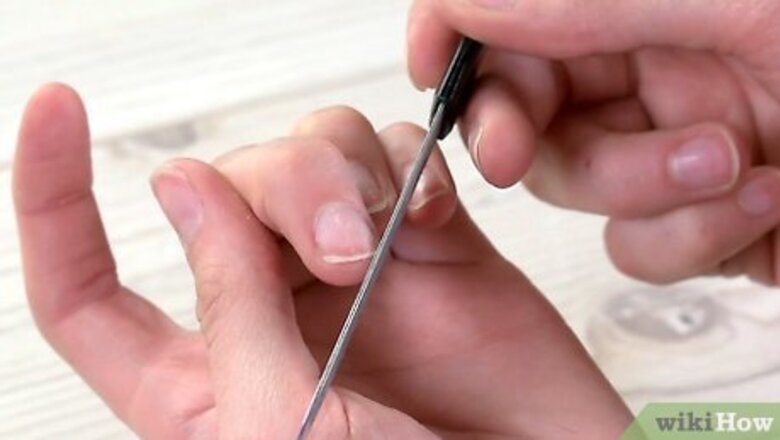
views
Applying a Non-LED/UV Gel Polish
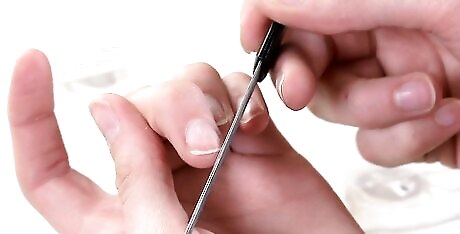
Trim, file, and buff your nails to prepare them for your manicure. Before applying any polish, spend 5 minutes prepping your nails so they’ll look picture-perfect after your at-home manicure. Use nail clippers to trim them all to an equal length, file away any rough edges and give them a square or round shape, and use a cuticle pusher to expose as much of the nail bed as possible. Finish your prep work by rubbing a buffer over the surface of each nail 2-3 times. All of these pieces of equipment can be bought at your local drug store. Try something new by filing your nails in a different shape, like the almond, coffin, or stiletto style.
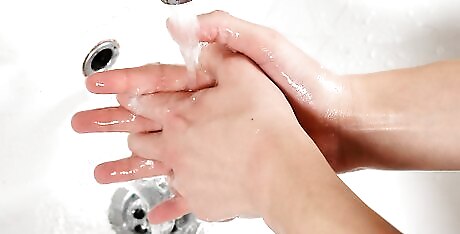
Wash your hands to remove any polish-blocking lotions or oils. Your nails must be completely clean of anything that might make it hard for the polish to adhere to your nail beds. Gently scrub both of your hands with warm water and soap; dry them off with a clean towel. Even if you don’t wear lotion, just the normal oil from your skin can form a barrier between your nails and the polish.
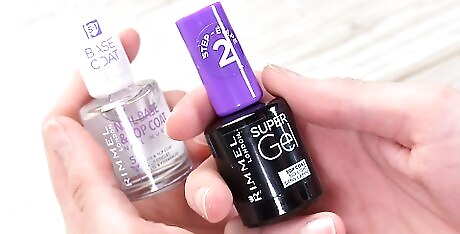
Select a gel-specific base and top coat for your at-home manicure. There are a lot of different products made to mimic the color and durability of a salon manicure without having to use a UV or LED lamp. Some products don’t even require a base coat, making the application process that much simpler. When you’re picking your products, consider the following: Look for a base and top coat that specifically mention giving your nails a gel-like finish. Check out the directions on the back to make sure you don’t need to buy any additional supplies. The colored polish itself doesn’t have to be gel-specific, but some brands of base and top coats should be used with the same brand of colored polish for the best results. This should be indicated in the product instructions.

Apply a thin base coat to your clean, dry nails and let it dry for 3 minutes. If the products you selected don’t require a base coat, you can skip this step. Otherwise, shake the base-coat bottle, then open it up and press the brush against the inner rim of the bottle to remove excess product. Stroke up from the bottom to the top of your nail in the middle, then paint along the right and left curves to cover your entire nail bed. It’s up to you if you want to do both hands at once or just one hand at a time! If you’re new to at-home manicures, it may be easier to do each hand separately so there’s less chance of your nails getting smudged.
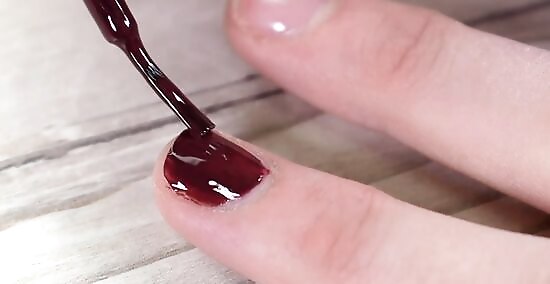
Apply 1-2 coats of normal nail polish, letting each coat dry for 3 minutes. This polish doesn’t have to have a gel-like finish, but make sure it’s the same brand as the base and top coats if that was recommended by those products. Shake the bottle before opening it so the color mixes completely. Wipe the brush against the interior rim to remove excess paint, then repeat the same brushing technique you did for the base coat: middle, left, and right sides to completely cover the nail. Let the coat dry for 3-5 minutes before applying the second coat. Most polishes require 2 coats to thoroughly cover the nail, though some may need 3. If you can still see the color of your nail through the polish, it needs an additional coat. Painting your nails at home can take 30-60 minutes, so it can be a time-consuming process. Watch a TV show, listen to a podcast, or call a friend so you don’t get bored.
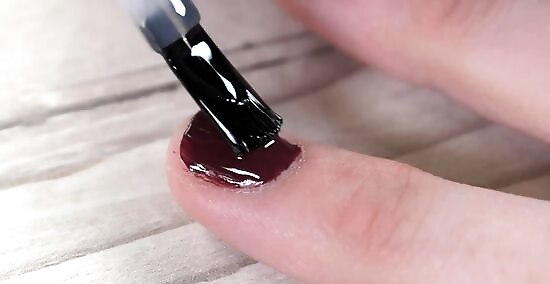
Seal your nails with a gel top coat and let them dry for 3-5 minutes. Shake the top coat and prepare the brush by wiping away excess product along the rim of the bottle. Just as you did with the base coat and polish, apply a thin, even layer of product over each nail. Finish each one by lightly swiping the brush across the tip of the nail to help prevent chips. This step is the most important in the at-home gel-manicure process and is what gives your nails that beautiful shine. Most top coats need 5 minutes to fully dry, but always check the instructions on your specific product to see what is recommended.Tip: Gently brush a nail against your bottom lip to test if it’s dry yet—if the nail feels smooth and hard, it’s done. If it doesn’t glide smoothly over your lip, it needs more time. Using your lip rather than the pad of a finger makes it less likely that the polish will smudge if it isn’t dry yet.
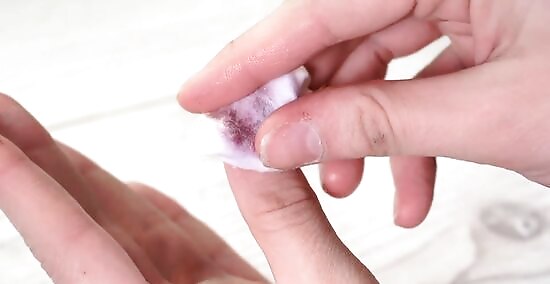
Use regular nail polish remover to take off the polish after 1-2 weeks. Once your polish begins to chip or you decide you’re ready for a new color, it’s super easy to remove this type of polish. Soak a cotton ball in nail polish remover and wipe away the polish on each nail. You may need to go over your nails several times to get everything off, but it should only take you a few minutes. Use a fresh cotton ball every 1-2 nails to make the removal process easier.
Using a UV Light
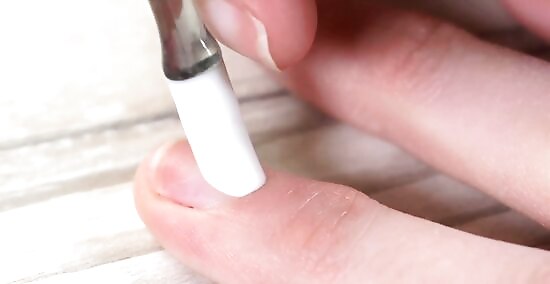
Prep your nails by trimming, filing, and pushing back the cuticles. The base of a perfect manicure lies in getting your nails in shape before applying any polish. Cut your nails so they’re all the same length, file them into whatever shape you prefer, and use a cuticle pusher to expose as much of your nail beds as possible. Consider giving your nails a square or round shape or try something a little more daring, like the stiletto style.

Wash your hands to remove any oils that may be on your nails. Lotions, fragrances, and even natural oils can block the polish from clinging to your nails and also make your skin more sensitive to UV rays. Use warm water and soap to gently scrub your hands, then dry them off thoroughly with a clean towel. Depending on how big your machine is, you may want to wash the first 1 to 2 inches (2.5 to 5.1 cm) of your wrists, too, if they might come into contact with the UV rays.
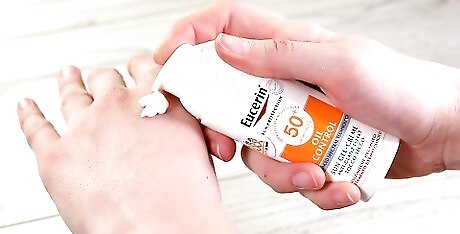
Apply sunscreen to your hands to protect them from the UV rays. Use at least an SFP 30, though a higher SPF would be perfectly fine. Rub the lotion into your hands until it has completely absorbed into your skin. A lot of UV lamps now come with gloves made specially to protect your skin. If you have these, consider wearing them every time you do your nails. While the chances of getting skin cancer from a UV nail light are low, they still exist. It’s best to take precautions anytime you’ll be exposed to UV rays.
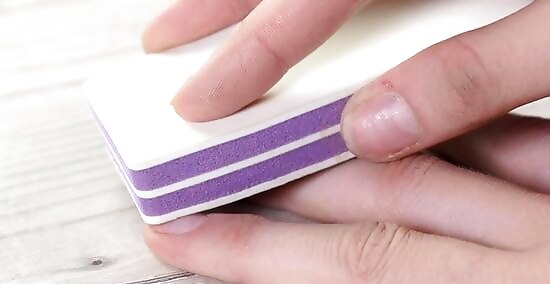
Buff your nails to wipe off the sunscreen and finish prepping your nails. The sunscreen could act as a barrier between your nails and the polish, and chances are that you got some onto your nails when you were applying it to your hands. Remove it by rubbing a buffer over each nail 3-4 times. Make sure to buff the middle as well as both the left and right sides of your nails to clear off the entire surface area.
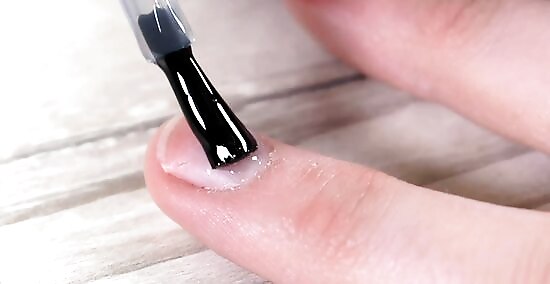
Apply a thin gel base coat to your nails on one hand. Shake the bottle and wipe away excess product along the interior rim. Paint a thin layer up the middle of your nail, then paint a strip on both the left and right sides. Lightly run the brush along the tip of your nail to make it less likely that your base coat will chip. When you use a UV light, you have to use special UV-specific polishes, base coats, and top coats. You can buy these online or at beauty supply stores. Lots of products can be used for both UV and LED lamps, but some are LED-specific. Make sure to check that your polish can be used with a UV lamp.
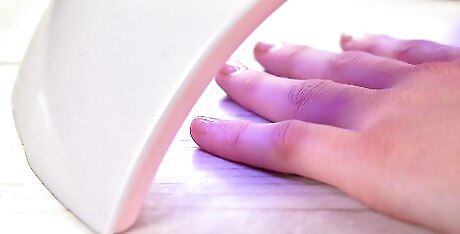
Cure your nails under the UV light for 2-3 minutes. Carefully place your hand inside the UV machine, being careful to not hit the sides or top with your nails. Turn the machine on and leave your hand in place while the base coat cures. Most UV machines have a button you can push that times each curing session for you. If you applied a thicker base coat, cure your nails for 3 minutes. For thin coats, 2 minutes will be fine.UV Versus LED Lights: LED lights are more expensive than UV lights, but they also cure your nails much faster, generally within 30 seconds, and they don’t use harmful UV rays. UV lamps take 2-3 minutes to cure nails and they do use UV rays.

Apply 2-3 coats of gel polish, letting each coat cure for 2-3 minutes. Paint light, thin coats of color on your nails. Paint an even strip down the middle, then paint the left and right sides. Put your hand under the UV light for 2-3 minutes for each coat. After the second coat, if you can still see your nail through the paint or if the paint looks streaky, do a third coat. Remember, you can only use gel polish with a UV lamp. And if you have gel polish, you can’t use it unless you cure it under a UV light—otherwise, it’ll stay tacky and won’t dry.
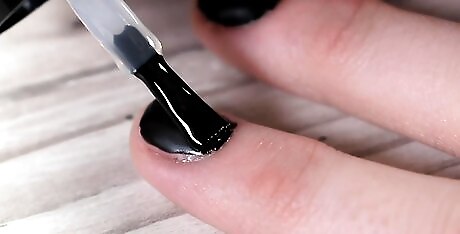
Seal your nails with a gel top coat and cure them for 2-3 minutes. Shake the bottle of gel top coat and wipe off the excess product along the rim of the bottle. Apply a thin, even coat to each nail, ending by gently swiping the polish along the tip of each nail to seal your manicure. Place your hands under the UV lamp and let the polish cure for 2-3 minutes. You can often buy the base and top coats together in a pack, or you can buy them individually online or from your local drug or beauty store.
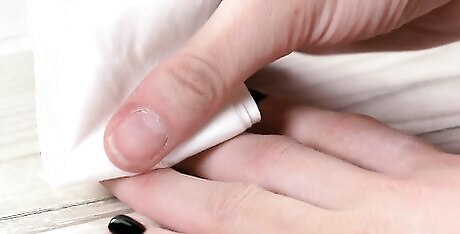
Remove sticky residue with an alcohol-soaked cotton ball. Once the top coat has cured, there may be some product left on the skin around your nails that feels sticky to the touch. Simply wet a cotton ball with rubbing alcohol or nail polish remover and gently rub it over each nail to remove anything left. After about 2 weeks when you’re ready to remove your manicure, try not to pick off the gel polish. Doing so can weaken your nails. Instead, take it off with rubbing alcohol, cotton balls, and tin foil.



















Comments
0 comment